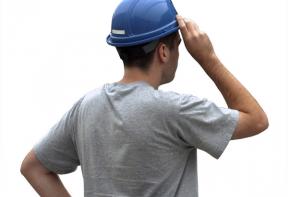Be your own home inspector
These tips from the pros will show you how your home measures up
“This offer conditional on a satisfactory home inspection.” If you’ve bought or sold a house lately, there’s a good chance this clause was written into the deal. Real estate agents often recommend an inspection, and homebuyers want an impartial detective to ferret out problems. But selling your house should not be the only time your home gets a thorough checkup. Why not apply the method and techniques of the professional home inspector to your own regular maintenance check? Maybe you don’t have the same in-depth knowledge and experience, but use an inspector’s approach regularly and you’ll know the place you live in a lot better and spot problems before they’re serious.
The home inspector’s most important tool isn’t a flashlight or a ladder, or any testing gadget, it’s a systematic method that scrutinizes a house completely. Different inspectors have different methods. Alex Welsh and Dale Mullen, two home inspectors from two parts of the country, share a common basic approach-both work from the outside in. They share the highlights of a typical inspection.
Welsh owns York Associates Home Inspection in Toronto, and once hosted his own television show, Home Inspector, on HGTV. His outside-in inspection starts with exterior walls, the foundation, windows and any attachments to the house for problems (see the complete list below). Then he inspects the drainage and the roof, if possible by climbing on it. This requires care, but Welsh believes it’s important, especially when dealing with flat roofs: ”You can’t see a flat roof from the ground.”
Mullen, president of the Atlantic branch of the Canadian Association of Home and Property Inspectors, follows a similar route. Mullen’s company, Home Works Inspection Services, operates in Yarmouth, N.S. His approach starts with a general neighbourhood survey. “If I’m in a subdivision, I look for common problems in similar houses.” Chances are those problems will also show up in the house he’s inspecting.
Both agree that checking the roof and drainage is key, and both describe the process with the same words: “Where is the water going?”
Welsh spends at least one-and-a-half hours of an inspection poking around the basement. He checks the foundation for structural defects and water damage: “I’m connecting what’s happening on the inside to what I saw on the outside.”
Next, a thorough inspection of ex-posed framing and the major systems: electrical, plumbing and heating. Here, Mullen checks that systems “do what they’re supposed to do.” He and Welsh both suggest that while the homeowner can recognize that a problem exists, if the solution isn’t clear and within your skill level, it’s best to call in a pro.
From the basement, both move upstairs. They scan walls and ceilings, mainly for water damage. They check windows and doors to see if they open and electrical receptacles to see if they work and are grounded. They check plumbing fixtures for pressure and proper connections. Mullen says, “Always look under the sinks.”
The attic is where they check insulation, ventilation, exposed framing and look for any sign of leaks. Mullen does this area last: “After the attic, I’m smelly and dirty. Clients don’t really want to be around me much after that.”
Getting the Gestalt
Using the inspector’s approach isn’t difficult-be thorough, objective and methodical. And put yourself in the right frame of mind. Over time, it’s easy to get accustomed to an existing problem and stop noticing it. It’s not that you are purposely ignoring it; you’ve just stopped seeing it. Set aside some time for a deliberate, complete in-spection of your home and you might be surprised at what you find.
Jump to a section
- Page 1 : Getting started on home inspection
- Page 2 : Exterior, foundation, doors and windows
- Page 3 : Electrical, plumbing and insulation, fire safety
- Page 4 : How to find a good inspector
- Page 5 : Other tips you may need
To leave a comment, please log in












No comments